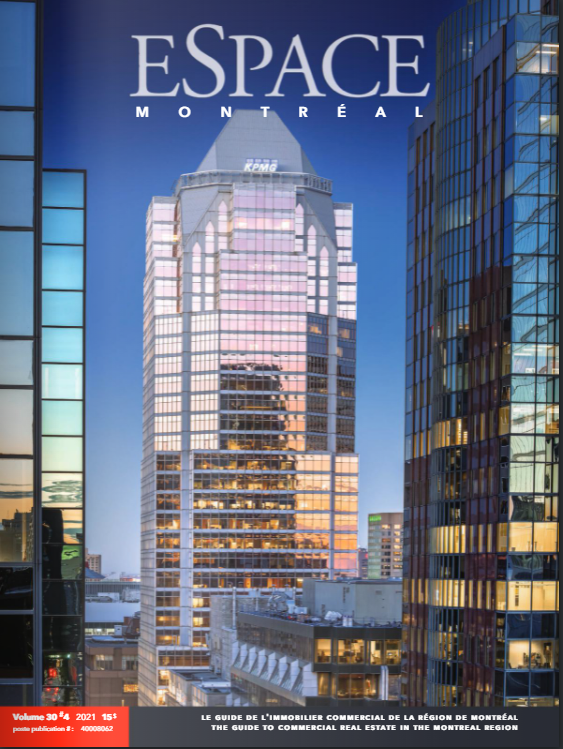Commercial real estate news releases from Avison Young Canada
Quarterly and topical research insights to help your business gain competitive edge in commercial real estate.
Espace Montréal Magazine: 2021 recap with Jean Laurin

Jean Laurin talks with Andrew Cross from Espace Montréal
Jean Laurin, President and Managing Director of Avison Young, Quebec, talks with Andrew Cross of Espace Magazine and provides a recap of the year 2021 which, among other things, saw the merger of Devencore's operations with those of Avison Young.
It has been 9 months since the Avison Young - Devencore transaction closed.
Jean Laurin: The reality is that change management challenges are natural whenever a transition takes place, but I have to say that it is going extremely well. There is a shared cultural fit between our two companies because the real estate brokerage and consulting business is a service business, and it is about people. No one wants to see change, but change is part of life. When change happens, you are concerned because you don't know how people are going to react. Let’s face it, Avison Young bought Devencore, so it’s the Avison Young culture that will be driving the future of the business. We are now more of a technology-driven company coupled with our expertise, which brings incredible value for our clients because real-time data helps them make critical, strategic real estate decisions not just for today’s landscape but looking ahead at their longer-range expectations. And since the original management team from Devencore remains in place at Avison Young’s Quebec operations, we will certainly have an influence on how things get done. We are moving from a transactional to a consultative approach in everything we do. It has been a positive experience because it fits with our values, character, and it fits with our vision of the future.
The office market: nuanced and multi-directional.
Jean Laurin: The office market can be broken down by category and region, and there are winners and losers. The office sector has been significantly impacted, and the world is trying to redefine what the office of the future will look like. The longer it takes to get out of the pandemic, the longer it will take to figure it out. If COVID had lasted six months, it would have been a different story. This has a direct impact on the amount of space companies need. The biggest challenge for clients is to develop the optimal occupancy strategy. No one has had to deal with this before. For occupiers, this will offer great opportunities, but for building owners, it is going to be more challenging.
Some parts of the Greater Montreal Area have not been affected as much as downtown because it takes time and it is challenging to come to work downtown. People are concerned about health risks on public transportation, while in the suburbs, people are driving to the office.
Downtown needs to find space for the next generation of office buildings.
Jean Laurin: This is not on anybody's radar, but when you think of the René-Levesque Boulevard corridor 10 years ago, there must have been a dozen vacant sites that were parking lots. Today, these have all been transformed into condos and hotels. Traditionally, many of these sites would have been set to become office buildings. The challenge for the future is to determine how office buildings will be developed in downtown Montreal – and where? If all the sites that have been targeted for office buildings continue to be developed into residential, at some point, you need to have expansion options for office workers. Other cities have done this in North America so, here, the city will also have to use zoning to ensure some natural development for the office environment of the future. This is not on the market’s radar, but it will need some attention from the City of Montreal.
Land costs rising across the region.
Jean Laurin: Montreal has lived through a very interesting expansion period as far as real estate development is concerned - on all fronts, mostly residential and now industrial as well. As a result, the supply has decreased, and the cost of land has gone up significantly. When you compare where prices were five years ago and today, it has more than doubled. Looking ahead, although no one has a crystal ball, we believe this trend – of less space dictating higher costs – will continue for some time. The expansion to the East sector will be natural.
Click here to view a digital copy of Espace Montréal
